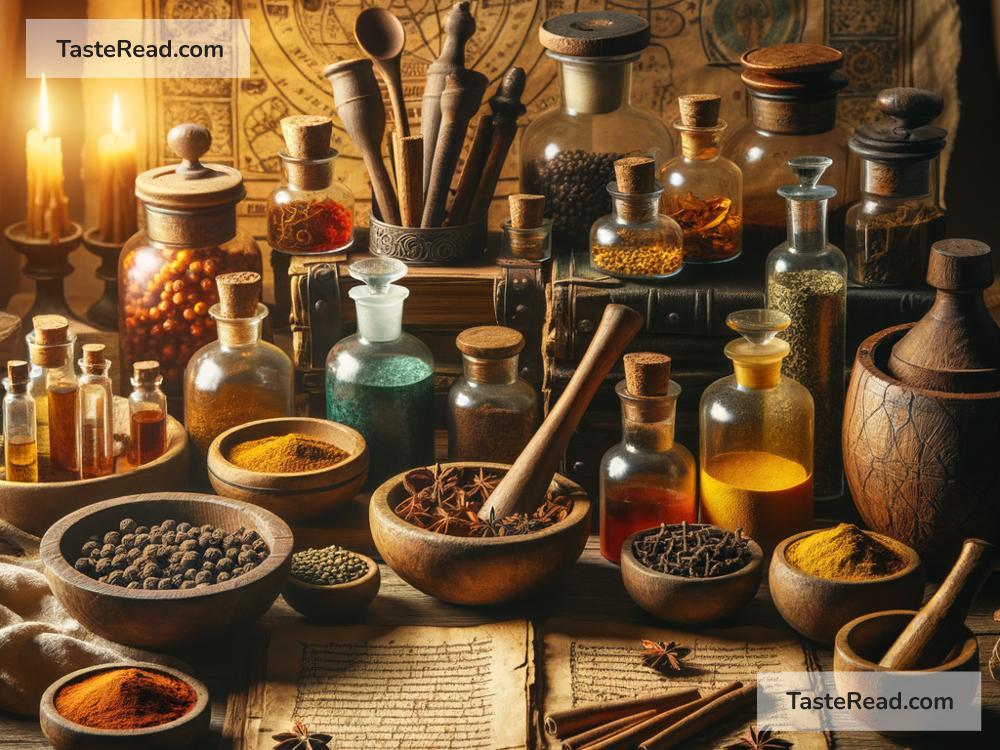How Spices Became Tools of Ancient Alchemy
Imagine a time when science was not yet a structured field, when people believed that magic and natural forces shaped the world. That time, centuries ago, was when ancient alchemists thrived. Alchemy, often thought of as an early form of chemistry, was a mix of experimentation, mysticism, and philosophy. While many connect alchemy to the quest to turn metals into gold, it covered much more. Alchemists explored ways to understand life, health, and the universe, and spices became surprising tools in their practices.
Spices have long fascinated humans. Their exotic flavors, aromas, and healing qualities made them valuable commodities. Ancient alchemists viewed spices not just as kitchen ingredients but as symbols and active agents in their work. They believed spices held secrets about transformation, healing, and even immortality. Let’s dive into the intriguing story of how spices became tools of ancient alchemy!
The Magical World of Spices
For thousands of years, spices like cinnamon, turmeric, ginger, and pepper were sought after for their healing powers. Spices were exotic; many came from far-off lands like India, China, and Persia. Travelers risked perilous journeys to make sure these treasures reached Europe and beyond. But why were spices so valuable?
The answer lies in their dual nature. On one hand, spices elevated the taste of food, making meals more enjoyable. On the other hand, they were believed to have mystical and medicinal properties. Ancient cultures thought spices could cure diseases, bring balance to the body, and even restore energy. This mystery surrounding spices made them perfect for alchemy, an ancient practice intertwined with healing and transformation.
Spices in Alchemical Philosophy
Alchemists didn’t see the world the way modern scientists do. They believed in a universe where everything had symbolic meanings. For them, elements like fire, water, and earth connected to spiritual principles. In this context, spices didn’t just have physical properties; they were part of a deeper mystery.
Take cinnamon, for example. Its warm aroma and fiery flavor might symbolize the transformative power of fire. Alchemists believed fire was an essential tool for transformation. Just as fire could purify metals, they thought cinnamon could purify the body and soul. Similarly, turmeric, with its golden hue, was often linked to sunlight and believed to bring vitality and energy.
The Role of Spices in Health and Longevity
Ancient alchemists were deeply interested in health and longevity, and they sought the “elixir of life”—a substance that could grant eternal life or cure all ailments. Spices played a key role in this quest because people believed they had life-giving properties.
For example, ginger was considered a spice that could “warm” the body and stimulate life energy. Pepper was believed to ignite internal strength, while saffron was associated with luxury and vitality. Alchemists used spices to create medicinal potions, many of which were aimed at improving health or preserving youth. While their ideas blended magic and natural science, some spice-related cures survived and are still used today. Ginger tea for nausea and turmeric for inflammation? Those remedies trace back centuries to the experiments of ancient alchemists.
Spices and the Transformation of Matter
One of the main goals of alchemy was the transformation of materials. Alchemists tried to turn basic metals like lead into gold, which symbolized spiritual perfection. They worked with tools like furnaces, alembics, and crucibles, performing experiments that were part science, part ritual.
Spices entered into this transformative work as both practical ingredients and symbolic catalysts. Clove, with its strong, penetrating aroma, was used to “ignite” transformation. Nutmeg was believed to enhance the clarity of a mixture. Combining spices with metals wasn’t about culinary experimentation—it was about exploring how substances interacted with one another.
Even though their experiments didn’t always succeed (you can’t actually turn lead into gold), alchemists learned valuable lessons. Their work laid the foundation for modern chemistry and medicine.
Spices as a Link Between Body and Spirit
Alchemists saw humans as part of the greater cosmos. Just like metals could be transformed, the human body and soul could also go through changes. Spices became tools in spiritual practices aimed at purification, enlightenment, and connection to higher realms.
Incense made from spices like frankincense and myrrh was burned during rituals to create an atmosphere of transformation. The aromatic smoke wasn’t just for the senses—it was believed to carry prayers to the heavens or cleanse negative energy around a person.
Lessons from Ancient Alchemy
What can we learn from the ways ancient alchemists used spices? First, their curiosity reminds us to explore the world with wonder. Spices may seem like simple cooking ingredients, but they carry centuries of history and meaning. Second, the alchemists show us the importance of connecting science with human experience. For them, chemistry wasn’t just about facts—it was about healing, balance, and understanding life itself.
Today, while alchemy is no longer a mainstream practice, many of its ideas live on. The study of materials, the healing power of natural ingredients, and the love of transformation are all rooted in alchemy’s legacy.
So, next time you sprinkle cinnamon on your coffee or simmer a curry with turmeric and ginger, remember: you’re working with ingredients that were once part of ancient alchemical experiments. Spices weren’t just tools in the kitchen—they were symbols of life, transformation, and the pursuit of universal secrets.


